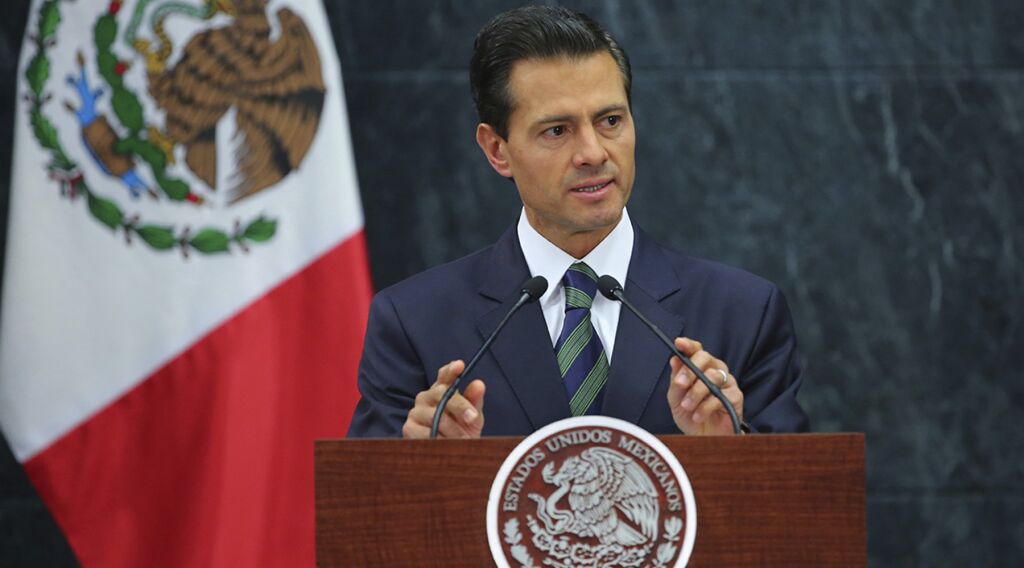
Who Will Mexico Trade With Now?
When Mexico is having trade troubles with United States President Donald Trump, where should it turn? Based on recent developments, the answer is Europe. On February 1, Mexican and European officials agreed to work on modernizing an existing free-trade pact. The negotiations of this pact, worth $57 billion in 2015, have to be sped up. (Additional meetings will be conducted in April and June).
Why the sudden move to improve Europe-Mexico relations? Donald Trump.
While campaigning before the election, Mr. Trump called the North American Free Trade Agreement (nafta) “the worst trade deal maybe ever signed anywhere but certainly ever signed in this country.” In his inauguration speech, the new president said, “Every decision on trade, on taxes, on immigration, on foreign affairs will be made to benefit American workers and American families. We must protect our borders from the ravages of other countries making our products, stealing our companies, and destroying our jobs.”
Large tariffs, discouraging companies from establishing operations overseas, and requiring Mexico to pay for a border wall have reemerged as viable options for the Trump administration.
So Mexico, understandably, is a little concerned and wants a little leverage.
After the agreement to “accelerate trade talks,” the EU Commission delivered a rather banal snub toward the American president: “Now is the time to build bridges, not walls.”
Vicente Fox, Mexico’s president from 2000-2006, joined in on the attack with a letter addressed to Mr. Trump (Politico, February 1):
You may be a fierce negotiator and an old-school businessman, but as a political leader you don’t understand how the world works. Your outdated solutions don’t apply to today’s needs. All nations know that we depend on each other. …
You don’t like to be challenged. But your idea of tearing up nafta has caused business leaders and politicians from all three nations to come together to call for the continuation of this win-win policy. … Inexplicably, you have decided to treat Mexico like a piñata, throwing every punch you can, justifying yourself with topics like the border and the trade deficit that the U.S. has with Mexico—some $60 billion, far less than what the U.S. has with other partners like China, Japan and the European Union.
Mexico’s trade is dominated by the United States, totaling $583.6 billion of goods in 2015. In 2015, EU trade with Mexico measured only $56.4 billion. Yet since 2005, European-Mexican trade volume has more than doubled. Manuel Molano, deputy director of the Mexican Institute of Competitiveness, knows that a transformation from the current situation will be tough. “We have talked about diversifying Mexico’s external commerce for years,” Molano said. “But it’s not that simple.”
President Trump’s foreign policy represents a major crisis for Europe and for Germany. But at the same time, it is an “enormous opportunity,” as former Belgium Prime Minister Guy Verhofstadt put it. Across the Continent, leaders and writers believe President Trump will force Europe to unite, presenting the bloc with an opportunity to lead the world. In the Trumpet Daily radio program cited above, contributing editor Richard Palmer examines how the Trump presidency is already uniting Europe and causing Germany to step up.
What’s most important to Mexico is the ability to diversify its trade. This will enable it to threaten and/or retaliate against American actions it opposes. To accomplish this, Mexico needs a credible trading partner. So now Mexico is turning toward the European Union at a time when the EU is scrambling to unify and become a stabilizing power in the world. Many analysts are noticing that the leadership of the “free world” is shifting from America to the heart of Europe: Germany.
Where does a nation turn when America looks shaky? Mexico is beginning to look to Europe. Trumpet editor in chief Gerald Flurry forecast more than five years ago that the Europeans would widen their trade scope. You can read the details of this forecast in “The Great Mart.”
